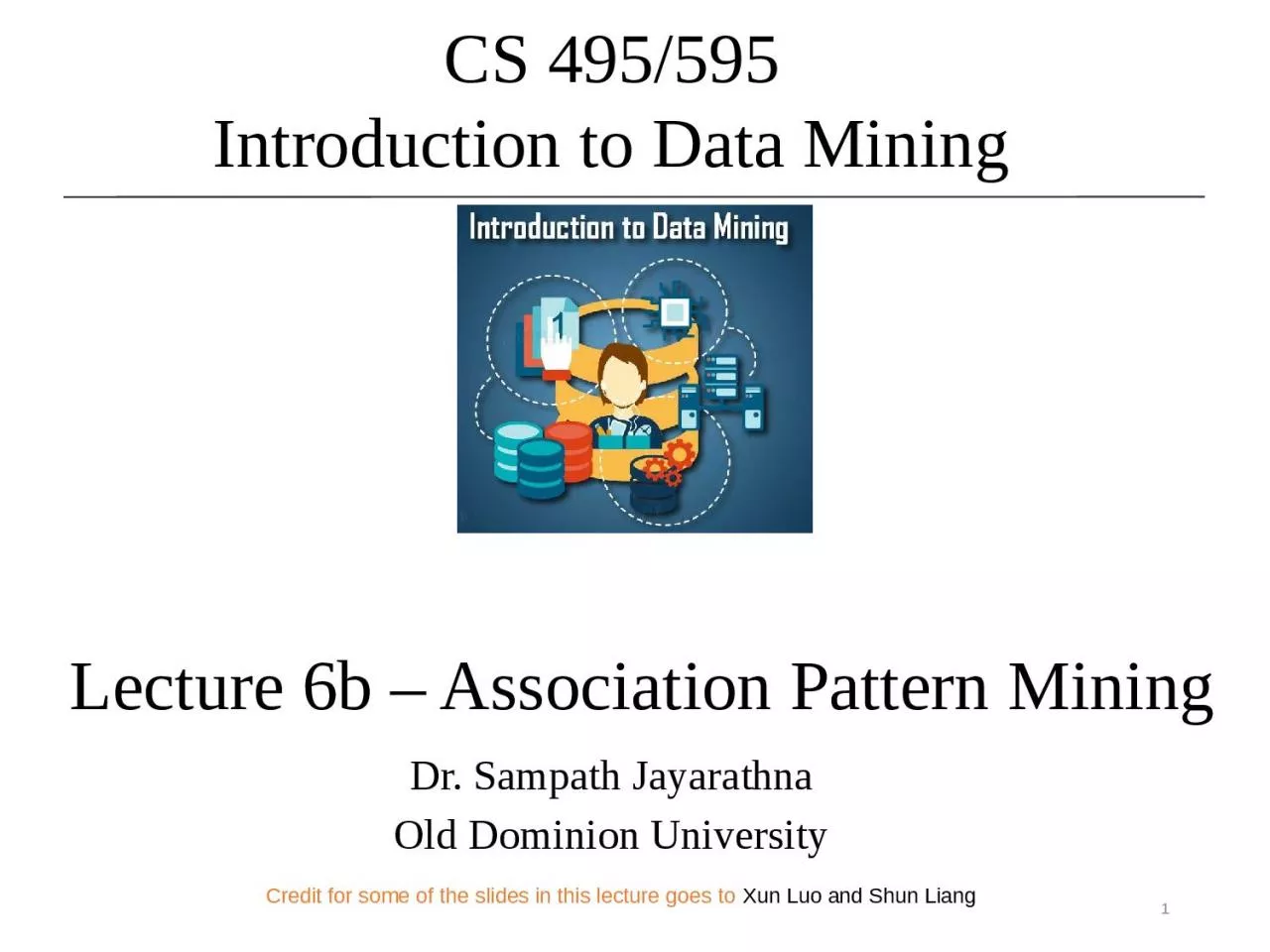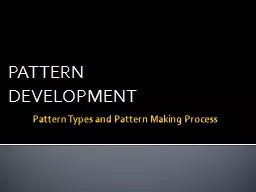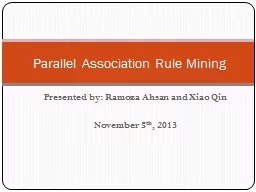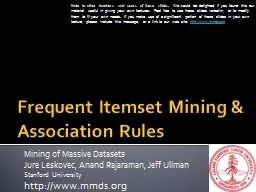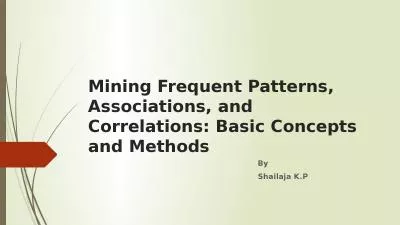PPT-Lecture 6b – Association Pattern Mining
Author : molly | Published Date : 2023-09-25
Dr Sampath Jayarathna Old Dominion University CS 495595 Introduction to Data Mining 1 Credit for some of the slides in this lecture goes to Xun Luo and Shun Liang
Presentation Embed Code
Download Presentation
Download Presentation The PPT/PDF document "Lecture 6b – Association Pattern Minin..." is the property of its rightful owner. Permission is granted to download and print the materials on this website for personal, non-commercial use only, and to display it on your personal computer provided you do not modify the materials and that you retain all copyright notices contained in the materials. By downloading content from our website, you accept the terms of this agreement.
Lecture 6b – Association Pattern Mining: Transcript
Download Rules Of Document
"Lecture 6b – Association Pattern Mining"The content belongs to its owner. You may download and print it for personal use, without modification, and keep all copyright notices. By downloading, you agree to these terms.
Related Documents

